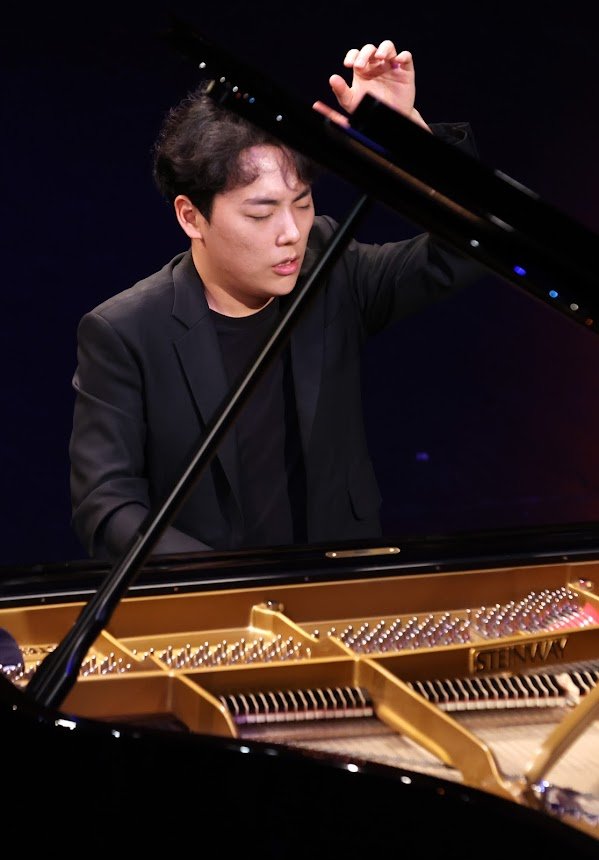Cliburn Competition: Semifinal Concert 2 (Recital), June 9, 2022
—Wayne Lee Gay
American pianist Clayton Stephenson, 23, put together an ideal repertoire set for his semifinal recital: two monuments of the sonata canon, one classical and one romantic, on either side of a virtuoso work representative of late twentieth-century modernism.
Stephenson's rendition of Beethoven's "Waldstein" Sonata, with its unforgettable opening passage, was definitely exciting, but occasionally frantic. Stephenson produced memorable sotto voce effects throughout, in a high-contrast reading designed make any audience sit up and listen. The gradual buildup to the opening rippling crescendo of the final movement was particularly exciting. Stephenson opted to play the octave passages near the end as glissandos; there's a tradition for that (exactly what Beethoven intended is unclear), and the effect fit well with Stephenson's very quick tempos.
Lowell Liebermann's Gargoyles, a four-movement suite from 1989 inspired by the gargoyles on medieval cathedrals, provided copious challenges and opportunities for Stephenson. Liebermann drew on several traditions to create this set (there is evident influence of Liszt, Mendelssohn, and Ravel here); Stephenson was emotionally sensitive as well as technically equipped. The same variety of tones (including a magical pianissimo) and sensitive pedal technique that enlivened his Beethoven worked equally well here.
Ferocious articulation of opening passages seems to be a trend among competitors, and Stephenson applied that little trick at the opening of Brahms' Sonata No. 1. The performance on the whole was adequately dramatic, as required, with fine handling of the lyrical second movement and the characteristically majestic finale.
Chinese pianist Changyong Shin, 28, also utilized the pianistic equivalent of shock-and-awe in the opening passage of J.S. Bach's Toccata in D. He recovered soon enough, and into a romanticized but largely effective reading of a work originally intended for the leaner, brighter harpsichord. Thanks to devotedly clean technique and spare use of the pedal, the transplanting to the modern piano proved unfailingly engaging.
Schumann's Humoreske of Opus 20 made its second appearance in this year's Cliburn competition. The work is inherently problematic, with a disjointed structure that, even in a fine performance, becomes tedious. To his credit, Shin applied the same clarity and energy he had utilized in the Bach, and unlocked much of the poetry and joy contained in this overlong piece.
Shin closed with Prokofiev's Seventh Piano Sonata, the middle and most successful of that composer's three "War" Sonatas, composed in the dark years of the early 1940s. The work's concise structures and distinctive thematic material make it a crowd pleaser (and, in the past, a frequent momentum builder for competitors). Shin made the most of the work's many dramatic moments, the finest of which was the beautifully paced rise to the climax in the central Andante calo.

